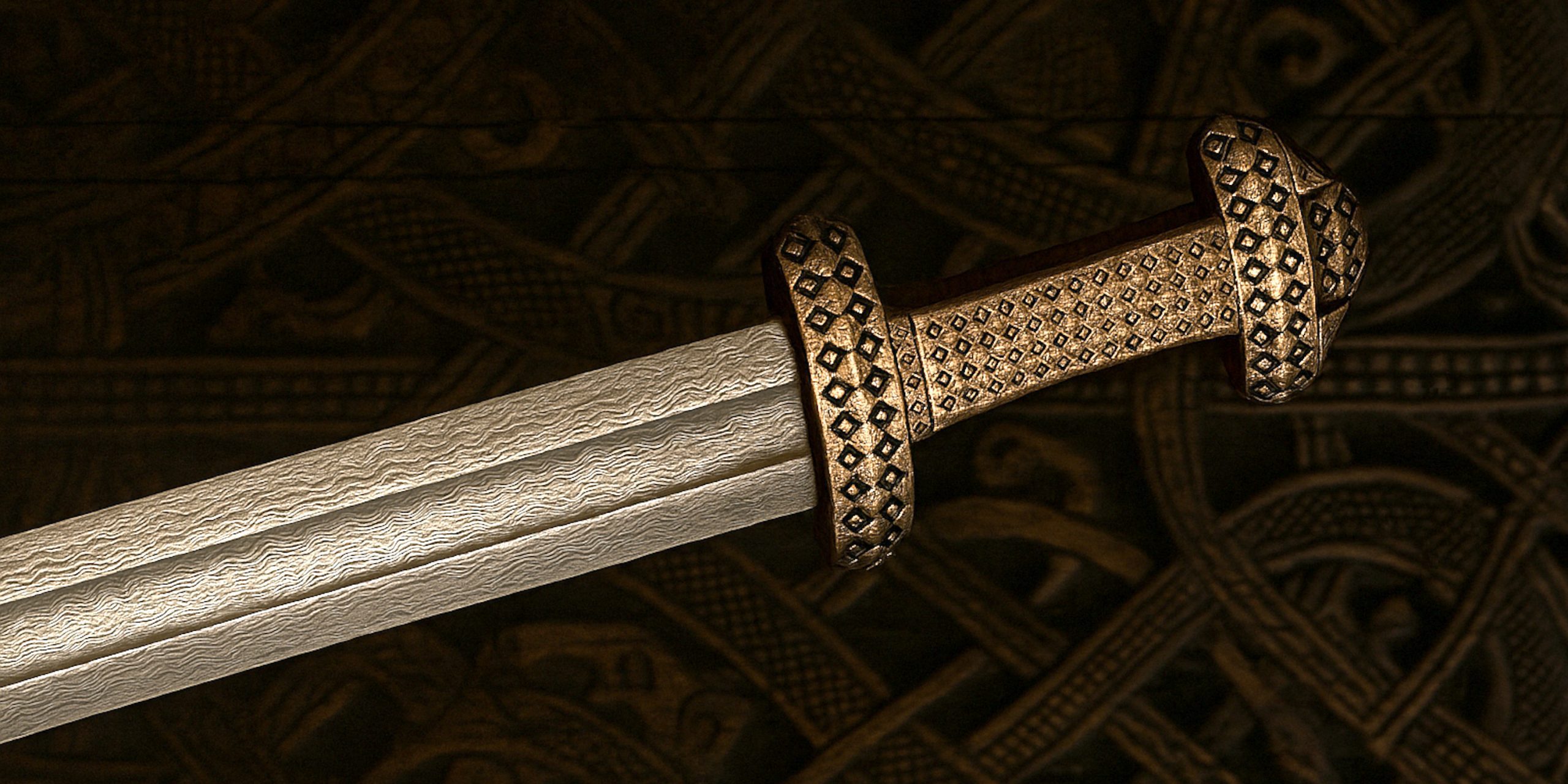
The Danish Viking sword was a high-status weapon wielded by Scandinavian warriors between the 8th and 11th centuries. Often associated with the elite, it symbolised power, skill, and wealth. Though similar in construction to other Viking Age swords, Danish variants were typically distinguished by certain stylistic features and regional adaptations. These swords were used both in close combat and as display weapons, with many examples richly decorated and buried with their owners.
Specifications
| Feature | Description |
|---|---|
| Blade Length | Typically 70 to 90 cm |
| Blade Width | Around 5 to 6 cm |
| Overall Length | Approximately 90 to 100 cm |
| Weight | Around 1.0 to 1.4 kg |
| Material | Pattern-welded iron and steel |
| Grip | Wooden core with leather or textile wrap |
| Crossguard | Short, straight or slightly curved |
| Pommel | Often lobed or trilobate, iron or bronze |
| Fuller | Deep and central, running most of the blade |
History and Evolution
The Danish Viking sword evolved from earlier Migration Period blades and Frankish spathae. By the 8th century, Viking craftsmen had begun developing more refined types using advanced forging techniques such as pattern welding. The Franks’ 9th-century export ban on swords helped drive local innovation across Scandinavia, including in Denmark.
Danish swords often reflected continental influences due to trade and raids across Europe. Many examples found in Denmark display Carolingian or Ottonian markings, hinting at either import or imitation. Over time, designs shifted from broader, cutting blades to slightly narrower ones more suited to thrusting, reflecting changes in battlefield tactics.
Advantages and Disadvantages
Advantages:
- Well-balanced for both cutting and thrusting
- Deep fuller reduced weight without compromising strength
- Durable construction due to pattern welding
- Visually imposing, enhancing status in combat and society
Disadvantages:
- Required considerable skill to forge
- Vulnerable to nicks and damage without proper maintenance
- Less effective against later mail and plate armour
- Shorter reach than some continental or later medieval swords
Comparison with Similar Weapons
| Feature | Danish Viking Sword | Anglo-Saxon Sword | Frankish Sword |
|---|---|---|---|
| Blade Width | Broad | Broad | Medium |
| Fuller | Central, wide | Central, moderate | Central, shallow |
| Pommel | Lobed or trilobate | Often decorated lobed | Wheel or trilobate |
| Grip Length | One-handed | One-handed | One-handed |
| Construction Style | Pattern-welded | Pattern-welded | Often monosteel |
| Decoration | Inlaid or etched | Often engraved | Frequently stamped |
Legacy
The Danish Viking sword left a lasting mark on Scandinavian martial culture. It became an iconic image of the Viking warrior, shaping later depictions in sagas, art, and modern media. Its craftsmanship influenced later medieval sword-making across Northern Europe, particularly in the early Norman and Norse cultures.
Several well-preserved examples have been recovered from burial sites and bogs, helping scholars trace regional styles and trade connections. Today, the Danish sword is a key part of Viking heritage exhibits worldwide.
Where to See
Notable museums displaying Danish Viking swords include:
- National Museum of Denmark (Copenhagen)
Holds several finds from Zealand and Jutland, including richly decorated hilts. - British Museum (London)
Features Viking Age swords from Danish burials and hoards. - Viking Ship Museum (Roskilde)
Displays weapons recovered from ship burials and coastal excavations. - Trelleborg Museum (Slagelse)
Focuses on finds from the Viking ring fortress, including weapon fragments.
Collector’s Guide and Auction Prices
Viking swords are highly sought after by collectors, though authentic examples are rare and subject to strict export and ownership regulations.
What collectors look for:
- Provenance and archaeological context
- Completeness of the blade and hilt
- Presence of pattern welding or inscriptions
- Minimal modern restoration
Estimated Auction Prices:
| Condition | Price Range (GBP) |
|---|---|
| Fragmentary blade only | £2,000 to £6,000 |
| Complete but unrestored | £10,000 to £25,000 |
| Museum-grade with inlays | £30,000 to £75,000+ |
Swords with confirmed Danish origins, especially those from known hoards or burials, command premium prices. However, due to ethical and legal considerations, many pieces are acquired only by institutions.



